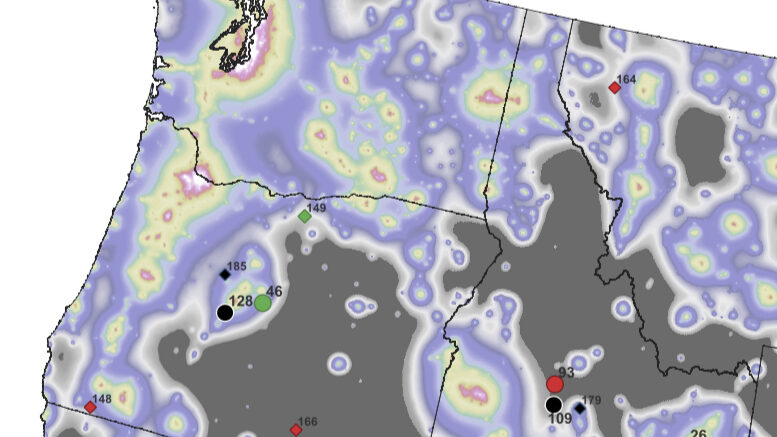Based on the Oregon Chapter of the IDA dark skies map, there are some interesting findings that can be made about Pacific Northwest. Let’s take a look at some of these findings and see what the future of IDA designated dark sky places in the PNW looks like. Hopefully some of the positive trends continue and new opportunities arise as a result of this research and review. The goal is to spread awareness of what’s happening so people can get involved and visit new amazing places!
Let’s start with the most obvious observation, that there are no sites in Washington! Of course with the greater population, it makes sense that there might be more light pollution. And with the population more spread out than in Oregon, there are fewer pockets of dark sky. There are still some dark sky spots that deserve recognition such as near Goldendale Observatory and North Cascades National Park.
Unlike Washington, Oregon has a few dark sky designations and looks to get new places in the future. As of this writing, only Prineville Reservoir State Park and Sunriver are designated as dark sky locations. But it does look like there are a few more areas that have their applications to become IDA Dark Sky certified! A big opportunity that we see is Cottonwood Canyon State Park as it is Oregons 2nd largest park by area and is often amongst the least visited places every year. This makes Cottonwood Canyon State Park an ideal place for astronomy. We would not be surprised if Cottonwood Canyon State Park became Oregons 2nd certified dark sky park by the end of 2023 or early 2024 at the latest. Other applications include the Oregon Outback, and Oregon Caves. Moreover, the other sites on this list ensure that almost every part of Oregon has a dark sky designated place nearby. Future work could be done near John Day and Northwestern Oregon near Idaho to certify a park or parks that get visitors. This would be like the Wallowa Lake State Park.
Idaho is very interesting as it looks like there are already a good number of IDA designated destinations. However, new opportunities are available near where the panhandle starts to take shape on the western border with Montana. An example new dark sky place could be in the Henry’s Lake State Park area.
Did anything surprise you? Did we miss anything? Let us know in the comments below or via social media. We post articles regularly, on a weekly basis, so come back next week for more articles like this!

Be the first to comment on "Interesting Dark Sky Observations About the Pacific Northwest"